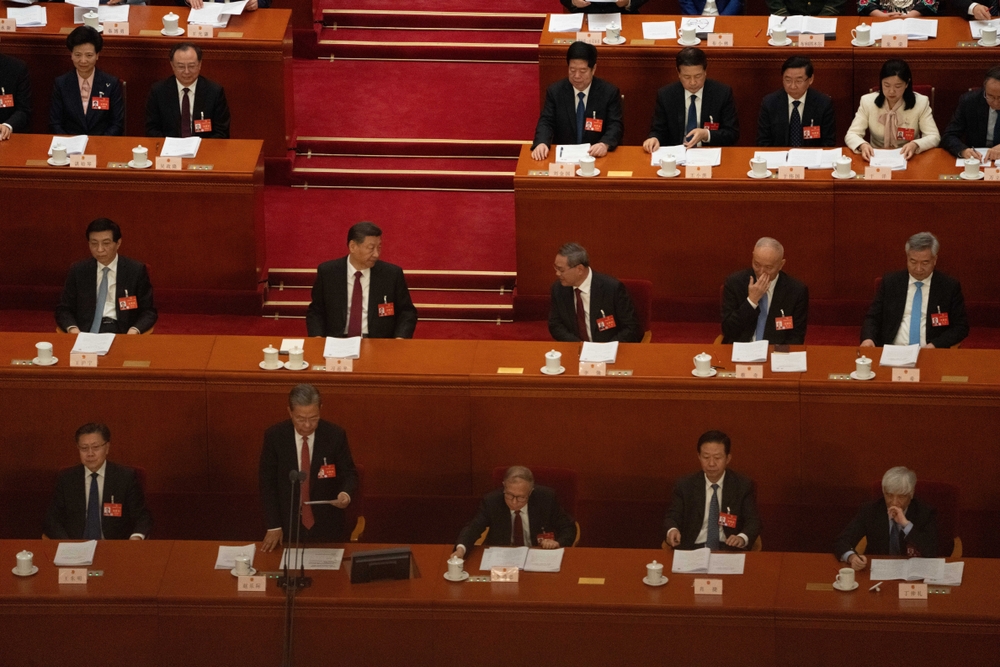By Vali Kaleji
By promoting its concept of "Chinese-style modernization" (henceforth CSM) China seeks to project an image of economic development and growth in Central Asia that is non-hegemonic, non-interventionist, and non-imposing, positioning itself as an alternative to both Russian and Western models. Given that CSM is rooted in China's authoritarian communist framework, it aligns with the secular authoritarian structures of Central Asian states and the interests of the pro-Chinese oligarchic networks within the region. However, despite its foundations in Chinese tradition, Confucianism, a distinct interpretation of Marxism, and uneven development, China's model of economic development and CSM has yet to establish itself as the dominant paradigm in Central Asia.

BACKGROUND: The concept of CSM, formulated in the late 1970s, has gained significant attention among Chinese leadership and researchers since the start of this decade. The emphasis on distinguishing CSM from Western and Soviet models highlights the theoretical possibility of offering a new developmental perspective to other nations. It also encourages these countries to design independent modernization strategies tailored to their unique national characteristics.
As the world’s second-largest economic power, it is crucial for China to promote its model of development and modernization within the international sphere. In this context, the development and evolution of the concept of CSM are closely linked to other key concepts proposed by China over the past few decades, such as "Peaceful Rise" and "Peaceful Development," which offer alternatives to the dominant Western development model and modernization pathways. Since September 2021, Beijing has introduced no fewer than three “Global Initiatives” focusing on development, security, and civilization. Together with the Belt and Road Initiative (BRI), these initiatives now constitute the four pillars of President Xi Jinping’s “Community for a Shared Future” framework, which China promotes as a blueprint for “world peace and stability,” “a powerful driver of global development,” and a foundation for a “New World Order.”
Following the collapse of the Soviet Union, during the transition from the Soviet development model to the Western one, the concept and model of CSM emerged as a potential alternative for Central Asian countries. While Western modernization paths emphasized liberal democratic values, transparency, a free-market economy, reduced state ownership, and the growth of private enterprises, CSM offered a different approach. It combined state control and ownership of key infrastructure with the expansion of private enterprises, notably without incorporating liberal democratic principles. The rapid and remarkable growth of China’s economy, its rising influence in global trade, and its emergence as the primary economic and trade partner of Central Asian nations—along with the One Belt, One Road initiative (the modern Silk Road) and the significant inflow of Chinese capital, labor, and companies into Central Asian markets—prompted Beijing to promote the Chinese modernization model within the region.
Given that CSM is rooted in China's authoritarian communist framework, it aligns closely with the secular authoritarian structures of Central Asian countries. This model, characterized by top-down development, differs from both Soviet and Western development approaches. Unlike the fully state-controlled development model of the Soviet era, it is not entirely government-driven, and unlike the Western model, it does not rely fully on private enterprise. Instead, it represents a hybrid system that blends state control with market-oriented mechanisms.
IMPLICATIONS: The CSM complements and strengthens China’s substantial investment and significant trade relations with Central Asia. Over the past 22 years, China has channeled approximately US$105 billion into the region through development financing, with the China Development Bank (CDB) serving as a key player in this process. By promoting CSM, Beijing appears to be aiming to stabilize and secure its investments while ensuring sustained commercial and economic influence in Central Asia.
Since the beginning of Deng Xiaoping’s leadership, economic development and growth have been central to the political legitimacy of the Chinese Communist Party, an approach that can appeal to the authoritarian leaders of Central Asia seeking to enhance their own political legitimacy. CSM aligns with the interests of the pro-Chinese oligarchic network in Central Asia, encompassing a diverse range of actors, from politicians to owners and managers of both public and private enterprises. While the Western development model, based on a bottom-up approach, emphasizes transparency, CSM, characterized by a top-down approach often associated with ambiguity, lack of transparency, and, in many cases, corruption, is particularly attractive to the region’s oligarchic networks and shadow economy. Moreover, the thousands of Central Asian students who graduate annually from Chinese universities under Chinese government scholarships—especially in fields such as economics, business, management, and finance—play a crucial role in disseminating and promoting the CSM throughout the region.
CSM also serves as a key element of China’s "soft power," its so-called "Chinese Marshall Plan," and "soft hegemonism" in Central Asia. It aims to offer a development model tailored to the cultural, national, and ethnic values of the region, complementing China’s growing economic and commercial influence. By promoting this model, China seeks to project an image of non-hegemonic, non-interventionist, and non-imposing development, positioning it as an alternative to the Russian and Western models. Additionally, the promotion of CSM plays a crucial role in China’s strategy to counter rising anti-Chinese sentiment and Sinophobia in Central Asia. In this context, a Chinese researcher suggests that CSM, as a new form of modernization, emphasizes "human modernization" as its distinctive realization. This concept reflects China’s efforts to present a soft, humane image of development and modernization.
Yet CSM in Central Asia faces significant constraints and obstacles. This model stems from a unique approach rooted in Chinese traditions, Confucian principles, and a distinct interpretation of Marxism, making it difficult to replicate effectively in other regions, including Central Asia. Even in Southeast Asian countries such as Taiwan, Singapore, Malaysia, and Thailand—nations with stronger linguistic, historical, and cultural ties to China—the Western model of development and modernization has emerged as the dominant paradigm. Moreover, CSM adopts an unbalanced approach to development, prioritizing economic growth while neglecting political development. This imbalance reduces its appeal, particularly among the middle class and educated young people in Central Asia, who tend to favor parallel development and embrace the values associated with Western liberal democracy.
Furthermore, several additional obstacles hinder the establishment of CSM as a dominant and unrivaled model in Central Asia. These include widespread anti-Chinese sentiment, along with ethnic and religious sensitivities, particularly regarding China’s policies in Xinjiang. There is also significant criticism of the performance of Chinese companies and contractors operating in Central Asia, particularly concerning issues such as labor discrimination, where Chinese workers are often given preferential treatment over local workers, and Beijing’s debt trap diplomacy in the region.
CONCLUSIONS: Although China has been the leading economic and trade partner of Central Asian countries for the past two decades, its economic development model has yet to establish itself as the dominant model in the region. Three decades after the collapse of the Soviet Union, Central Asia continues to struggle with selecting a definitive development and modernization pathway. Various aspects of the Russian, Chinese, Western, and even the Turkish model—particularly after the Justice and Development Party came to power—have been adopted to varying degrees, but no single model has prevailed. Instead, the region operates within a mixed or hybrid framework, characterized by a blend of government control and authority, free-market principles, corruption and shadow economies, private sector activity, and foreign investment.
These circumstances are the outcome of a complex interplay of factors inherent in societies transitioning from tradition to modernity in Central Asia. Key among these factors are the challenges of reconciling religion, traditions, and ethnic and national beliefs with the demands of development and modernization, as well as the region’s unique political-economic structures. Additionally, the lack of consensus among leaders and ruling elites regarding the selection of a specific development model further complicates the process. The economic, financial, and commercial interests of the oligarchic network and the shadow economy also play a significant role in shaping the region’s developmental trajectory. To address or obscure these contradictions, regional leaders often emphasize the creation and promotion of a distinct, indigenous model of development and modernization tailored to their specific national contexts.
AUTHOR’S BIO: Vali Kaleji, based in Tehran, Iran, holds a Ph.D. in Regional Studies, Central Asian and Caucasian Studies. He has published numerous analytical articles on Eurasian issues for the Eurasia Daily Monitor, the Central Asia-Caucasus Analyst, The Middle East Institute and the Valdai Club. He can be reached at This email address is being protected from spambots. You need JavaScript enabled to view it. .



